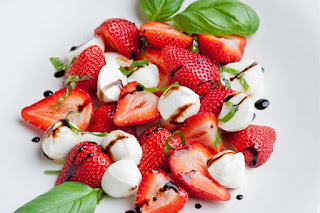This is really a very simple dish but at the same time very fulfilling, appetizing and not to forget very delicious at the same time. Usually this kind of dish is popular in more of the Vegetarian communities in the South Asian culture. Since spices such as cumin is not that used and consumed in the Western society or say in the continental cuisines, but it may come as a surprise to the Western communities as well as to how easy the combination of the spices and yet how tasty it can be.
Like I said its a very simple and easy to prepare dish so hope yous guys give a definite try at making it.....please my high recommendations. Here are the ingredients and the procedure to prepare this dish.
PREPARATION TIME: 2 MINUTES
COOKING TIME: 15-18 MINUTES
INGREDIENTS
800 g/ 1 lb, Charlotte potatoes
4 tbsp, olive oil
1 tsp lightly ground cumin
2 tbsp fresh thyme leaves( you can substitute the fresh herb with any other herbs such as fresh coriander leaves/ dill leaves/ fresh rosemary)
Salt & pepper as to taste
Now,
. Boil the potatoes in salted water for 8 minutes then drain well and leave to steam dry for 2 minutes.
. Heat the oil in a large saute' pan.
. Sprinkle the potatoes with cumin, (fresh herb of your choice) here i am using thyme and plenty of salt and pepper then fry fro 10 minutes, shaking the pan and stirring occasionally.
. Voila! the dish is ready to be served.
. Well, like i said this is a pretty simple and straight forward dish and you can have it as an appetizer or as an accompaniment to any main course.
The other more familiar dish to this dish which I am sure more of the gourmet' food consumers or say the westerners are familiar is, is the Sautee'd Potatoes with Garlic and Rosemary. And its not that of a different dish than this, i say this because the procedure to prepare this dish is more over similar to the one i just explained above...the only tweak you are going have to make is; just break 1 bulb of garlic into cloves and boil in their skins with the potatoes before saute'ing, leave out the cumin and replace thyme with chopped fresh rosemary. That's about it. So like i said earlier, its a very simple and easy to make dish hope you all will give it a try. And like always, enjoy & cheers.
I will be coming with all the videos of the cuisines that i have shared with you guys so far, pretty soon. So if you have any suggestions, comments please feel free to share with me....I'd be more than grateful.
0
Like I said its a very simple and easy to prepare dish so hope yous guys give a definite try at making it.....please my high recommendations. Here are the ingredients and the procedure to prepare this dish.
PREPARATION TIME: 2 MINUTES
COOKING TIME: 15-18 MINUTES
INGREDIENTS
800 g/ 1 lb, Charlotte potatoes
4 tbsp, olive oil
1 tsp lightly ground cumin
2 tbsp fresh thyme leaves( you can substitute the fresh herb with any other herbs such as fresh coriander leaves/ dill leaves/ fresh rosemary)
Salt & pepper as to taste
Now,
. Boil the potatoes in salted water for 8 minutes then drain well and leave to steam dry for 2 minutes.
. Heat the oil in a large saute' pan.
. Sprinkle the potatoes with cumin, (fresh herb of your choice) here i am using thyme and plenty of salt and pepper then fry fro 10 minutes, shaking the pan and stirring occasionally.
. Voila! the dish is ready to be served.
. Well, like i said this is a pretty simple and straight forward dish and you can have it as an appetizer or as an accompaniment to any main course.
The other more familiar dish to this dish which I am sure more of the gourmet' food consumers or say the westerners are familiar is, is the Sautee'd Potatoes with Garlic and Rosemary. And its not that of a different dish than this, i say this because the procedure to prepare this dish is more over similar to the one i just explained above...the only tweak you are going have to make is; just break 1 bulb of garlic into cloves and boil in their skins with the potatoes before saute'ing, leave out the cumin and replace thyme with chopped fresh rosemary. That's about it. So like i said earlier, its a very simple and easy to make dish hope you all will give it a try. And like always, enjoy & cheers.
I will be coming with all the videos of the cuisines that i have shared with you guys so far, pretty soon. So if you have any suggestions, comments please feel free to share with me....I'd be more than grateful.








